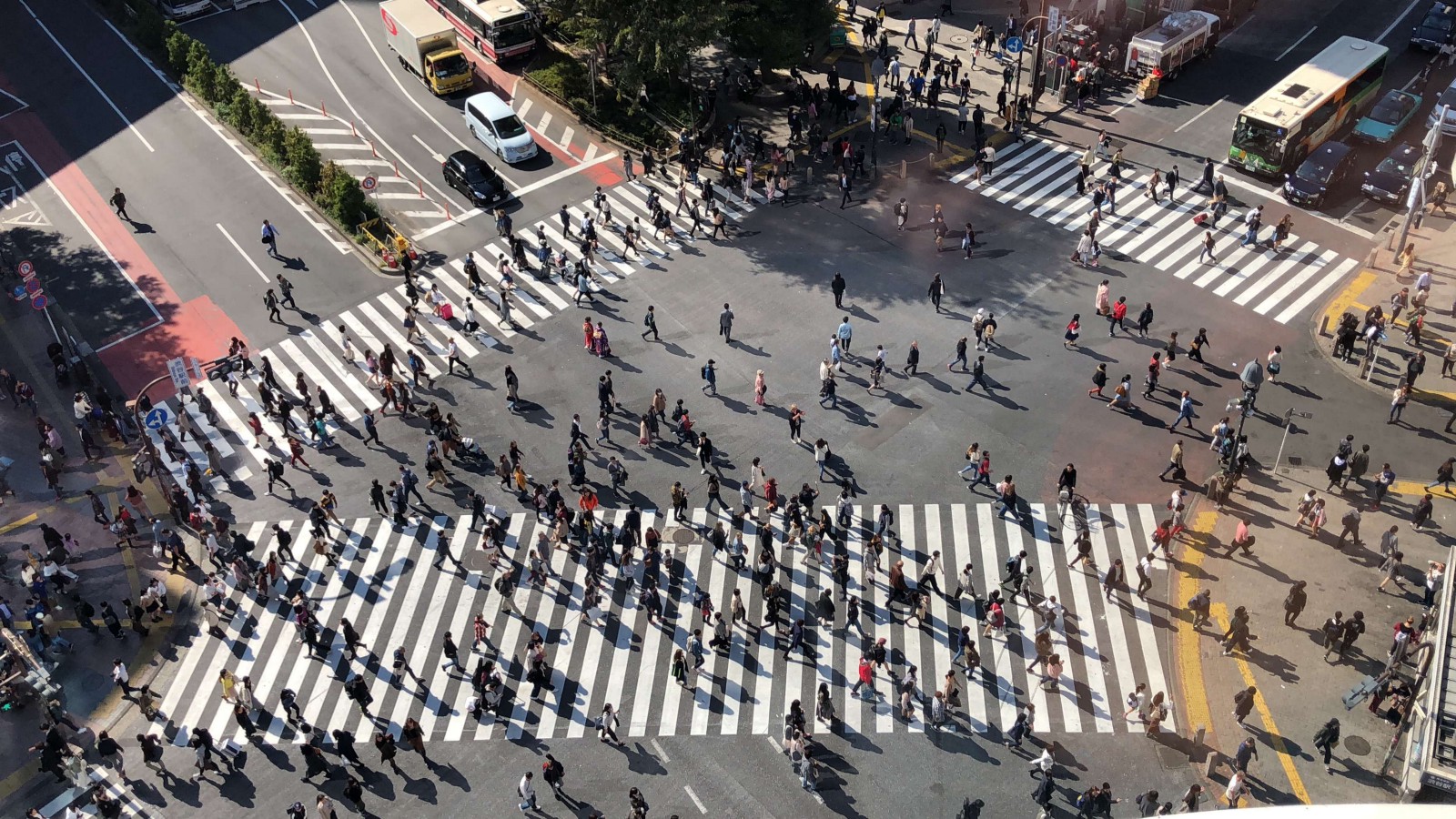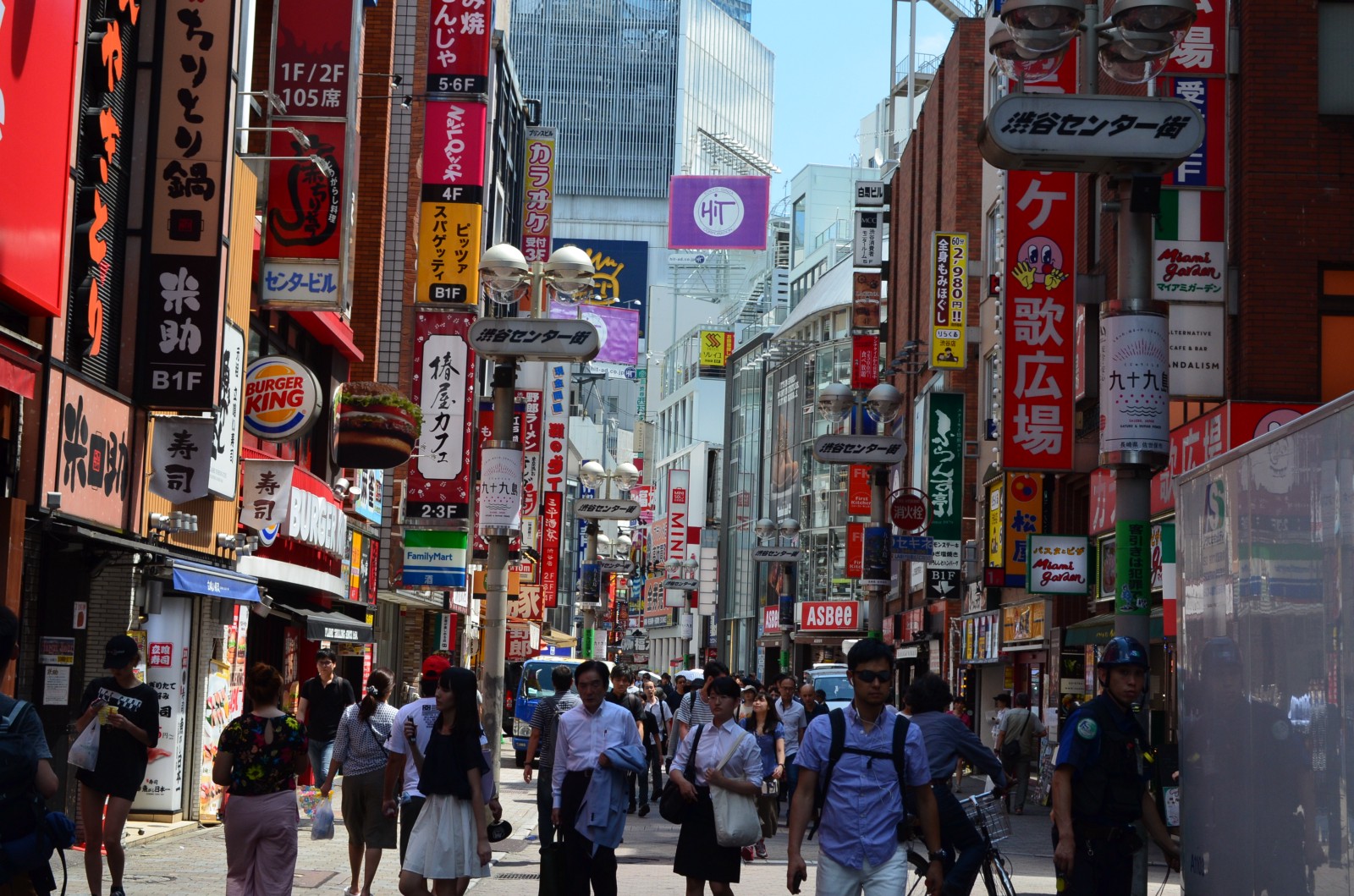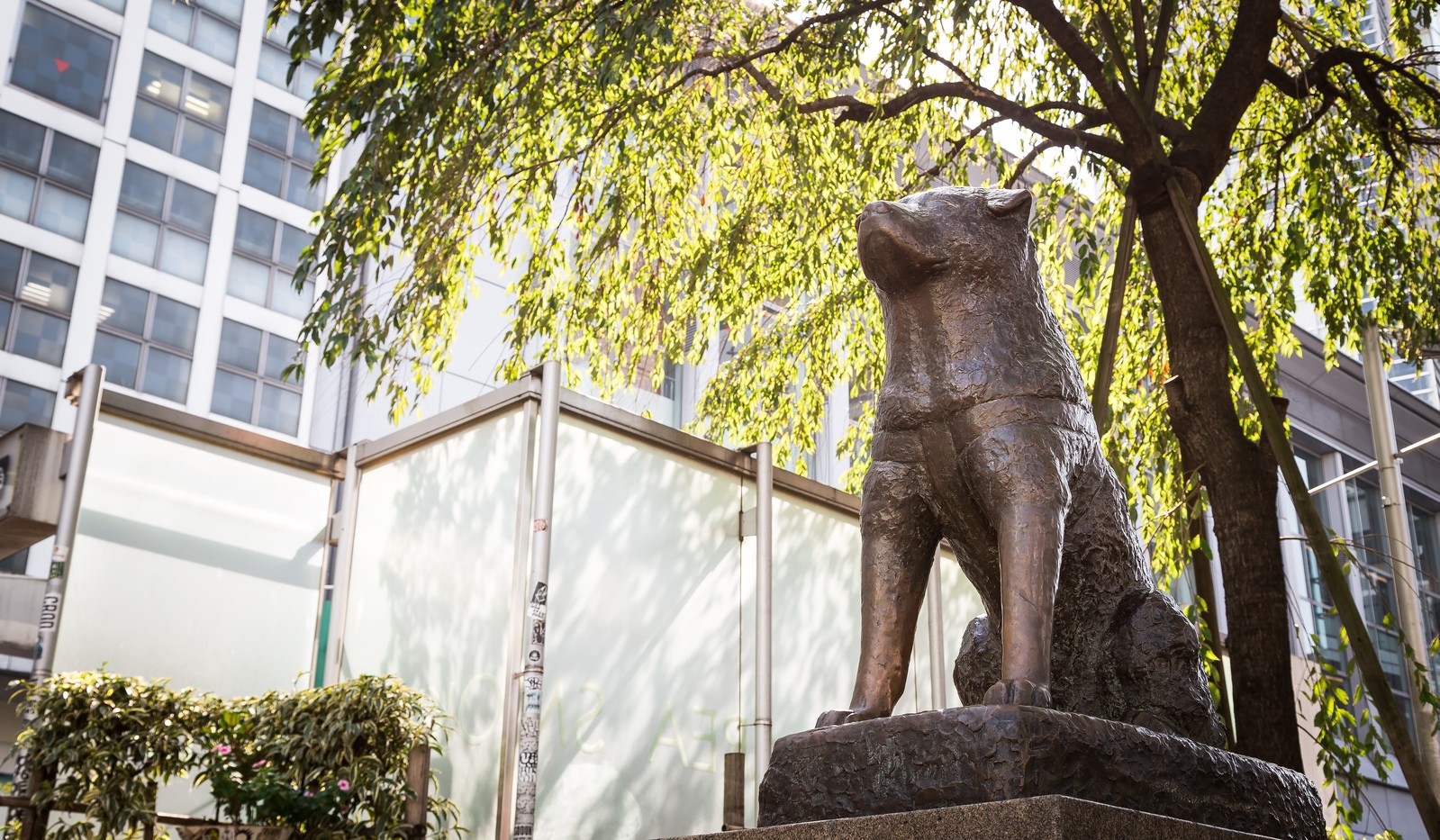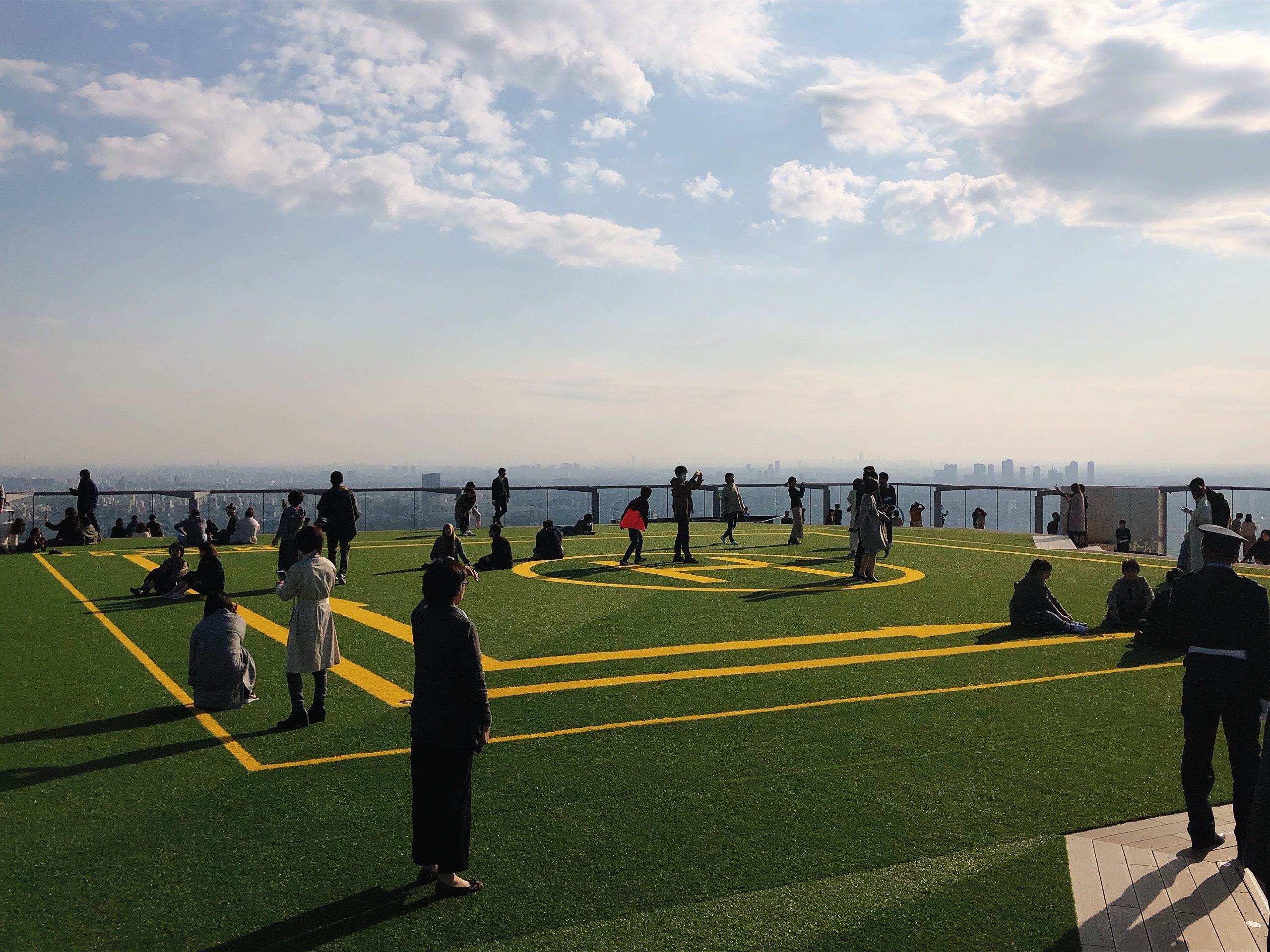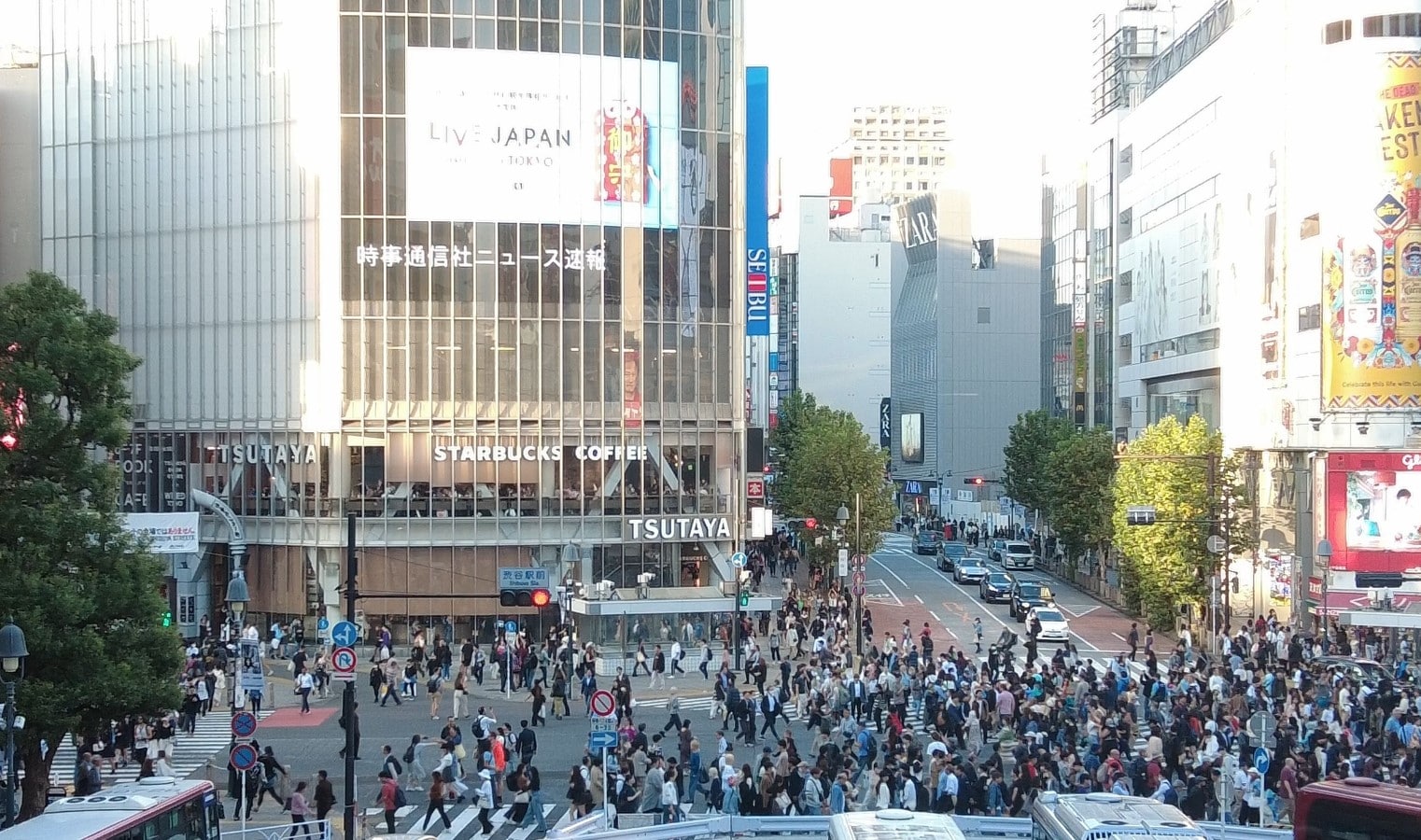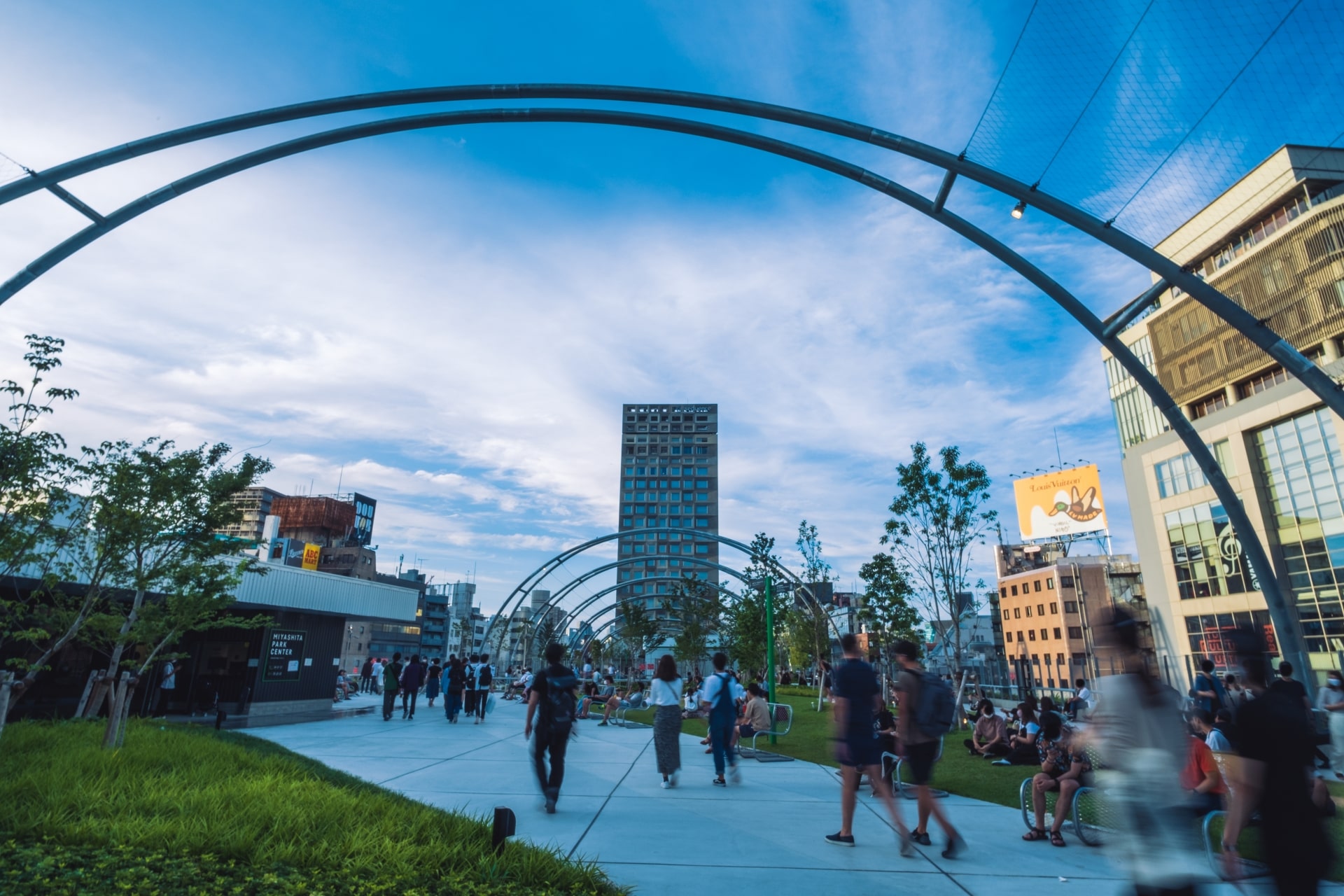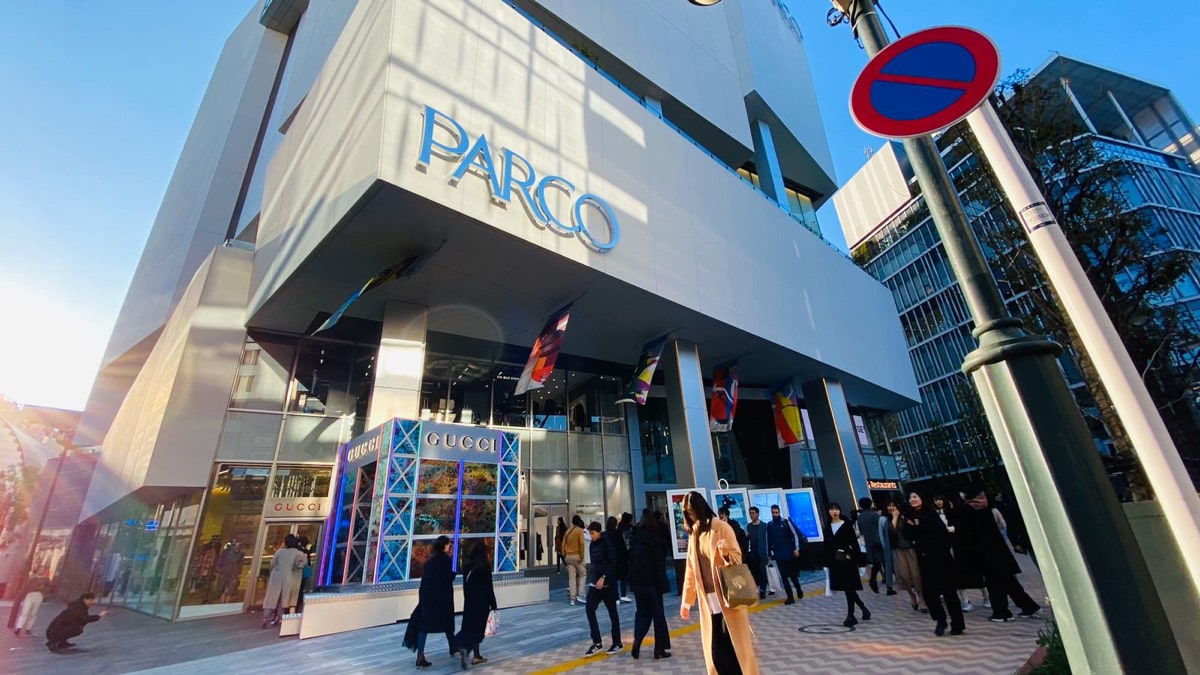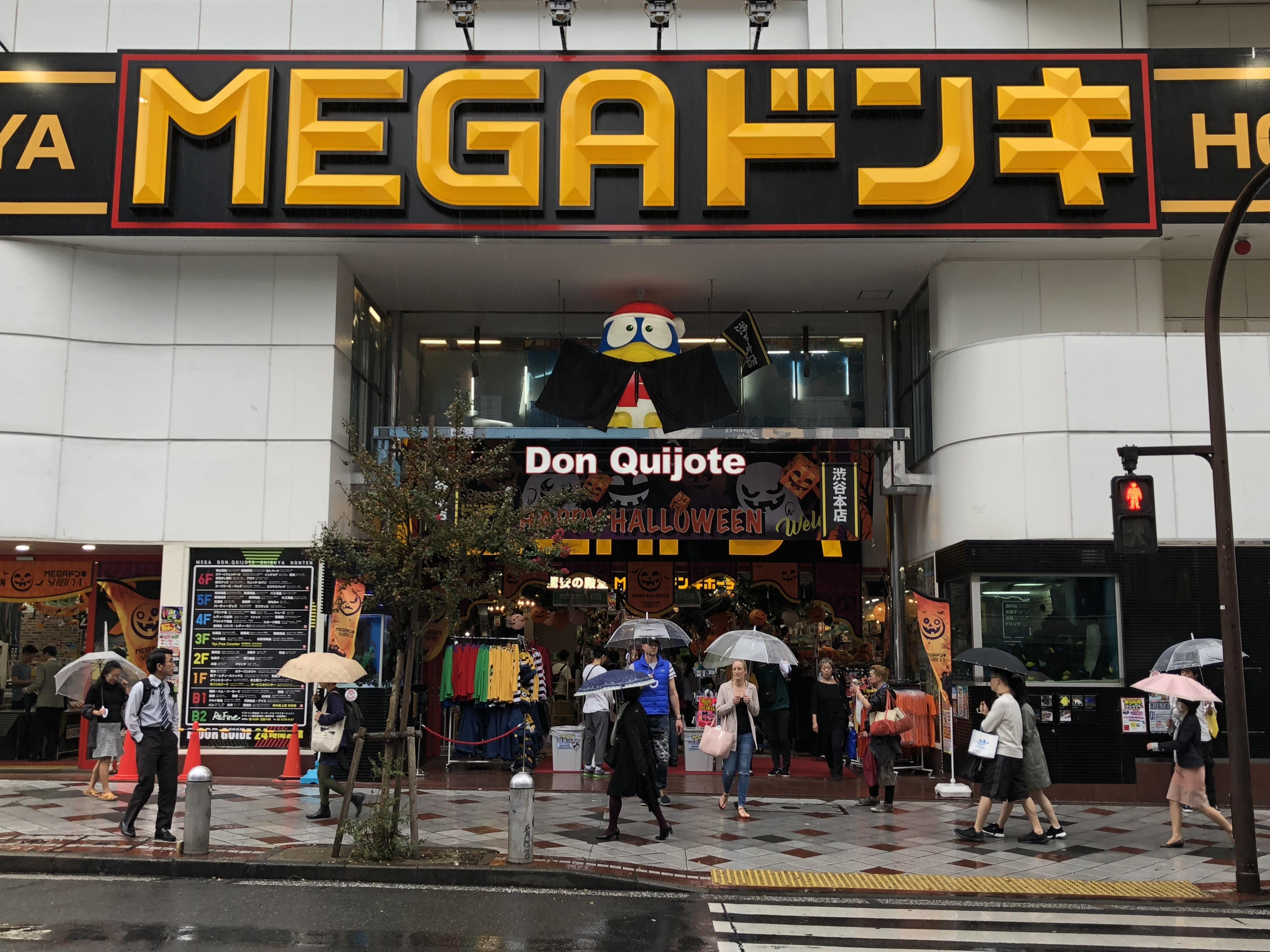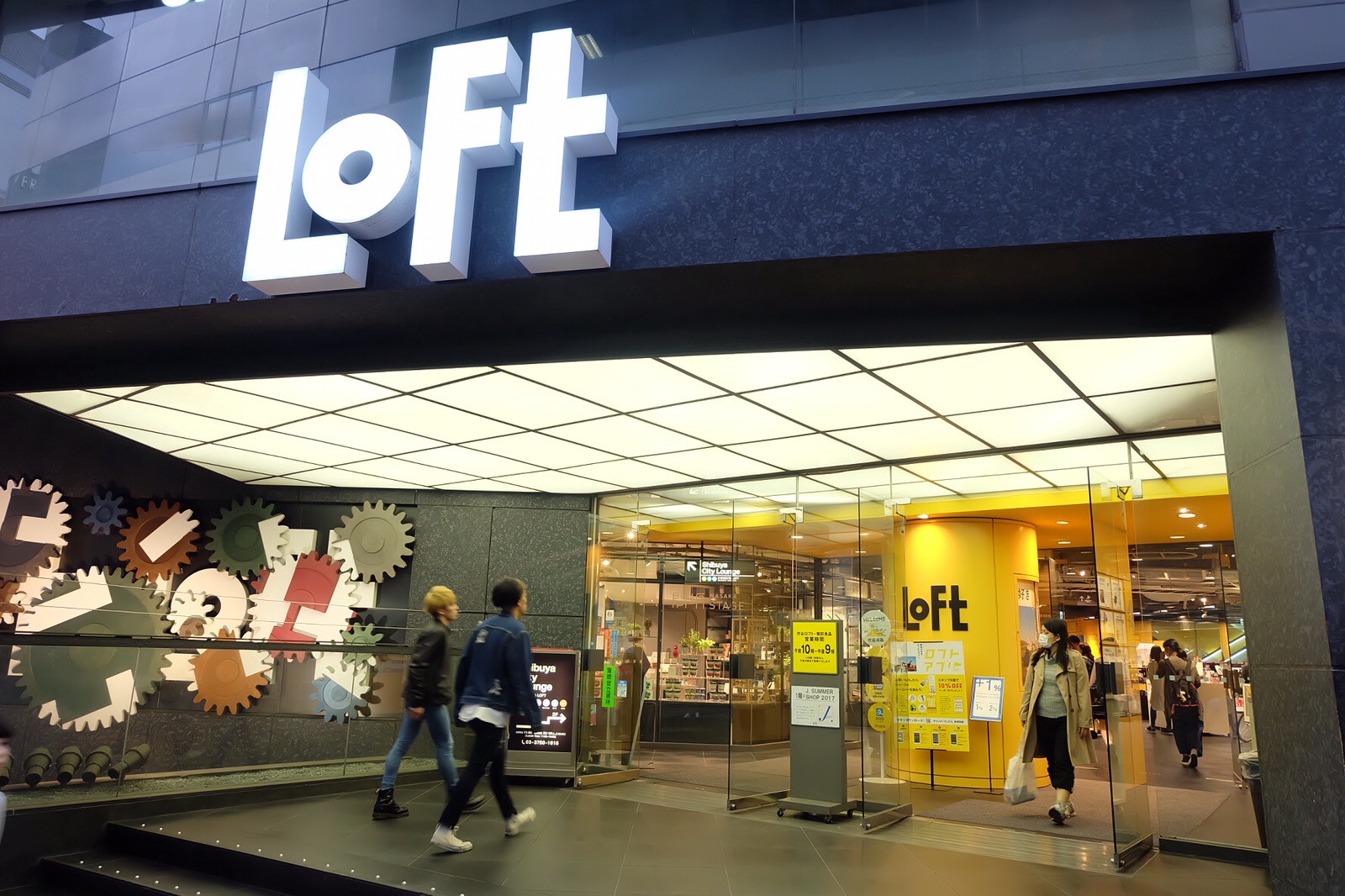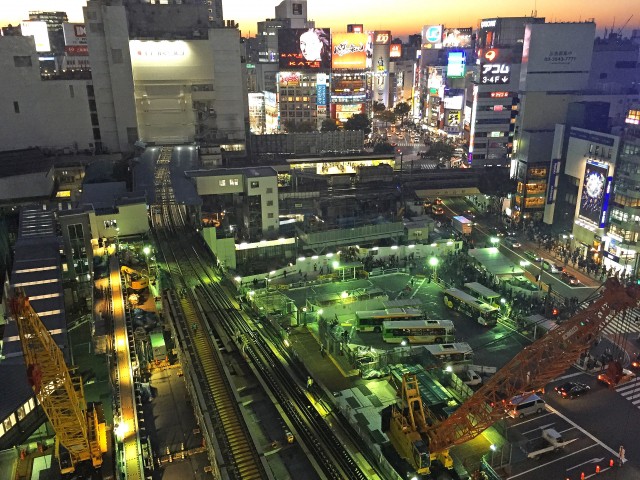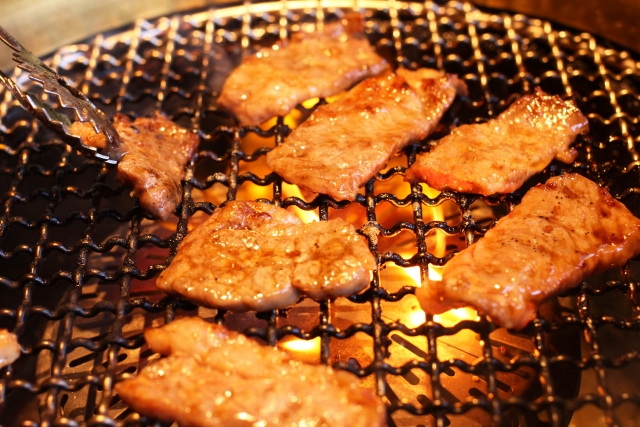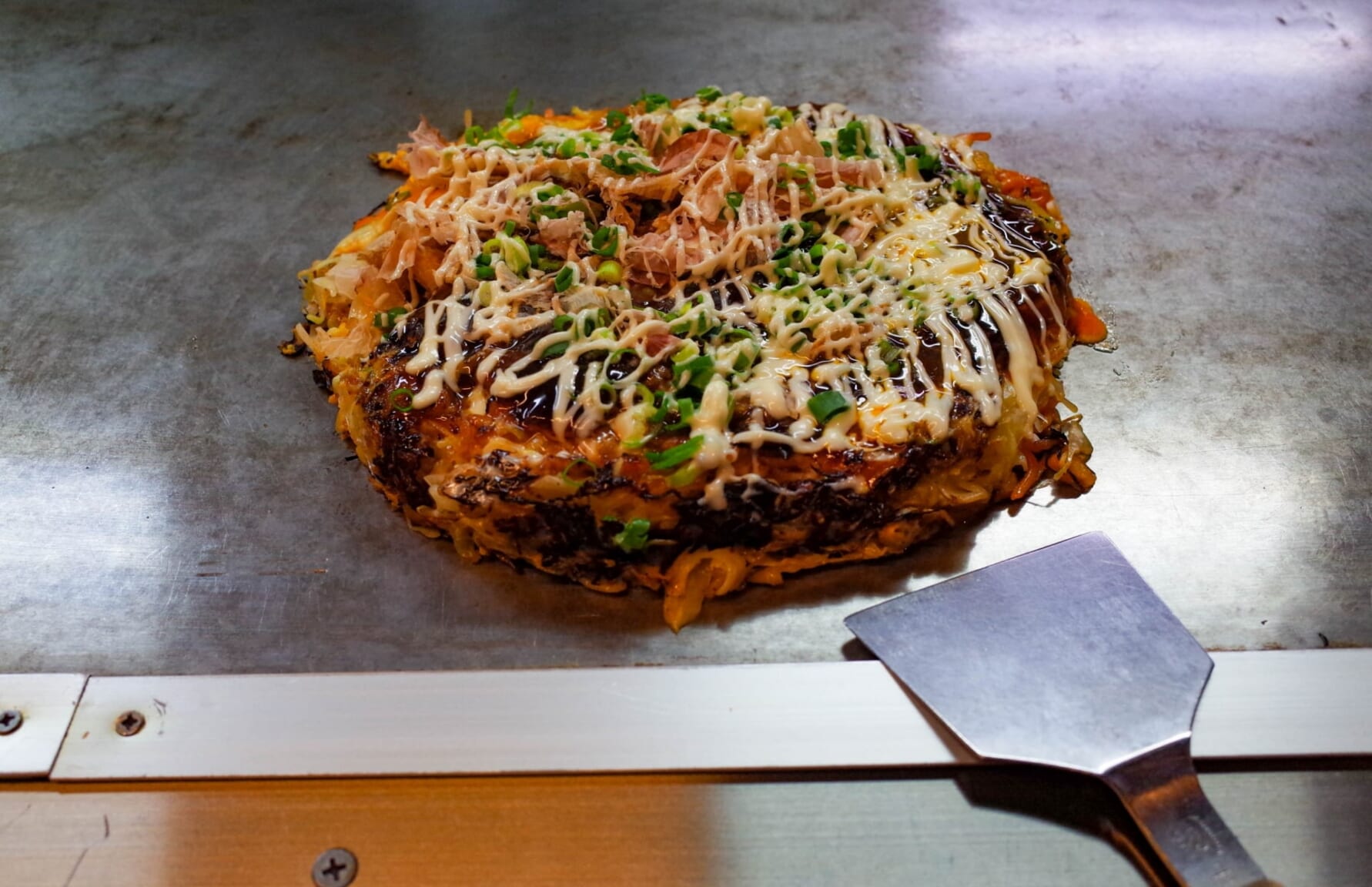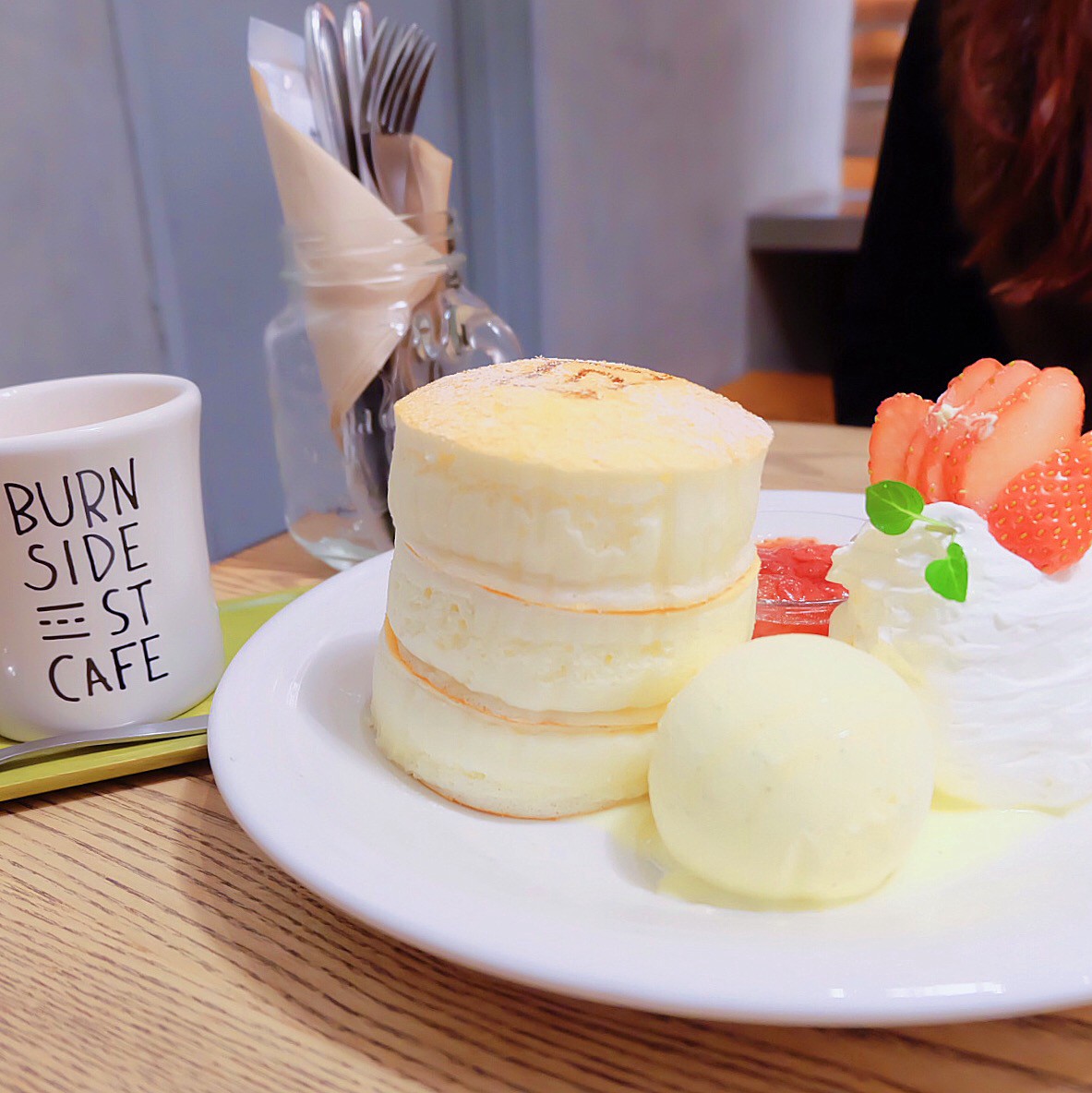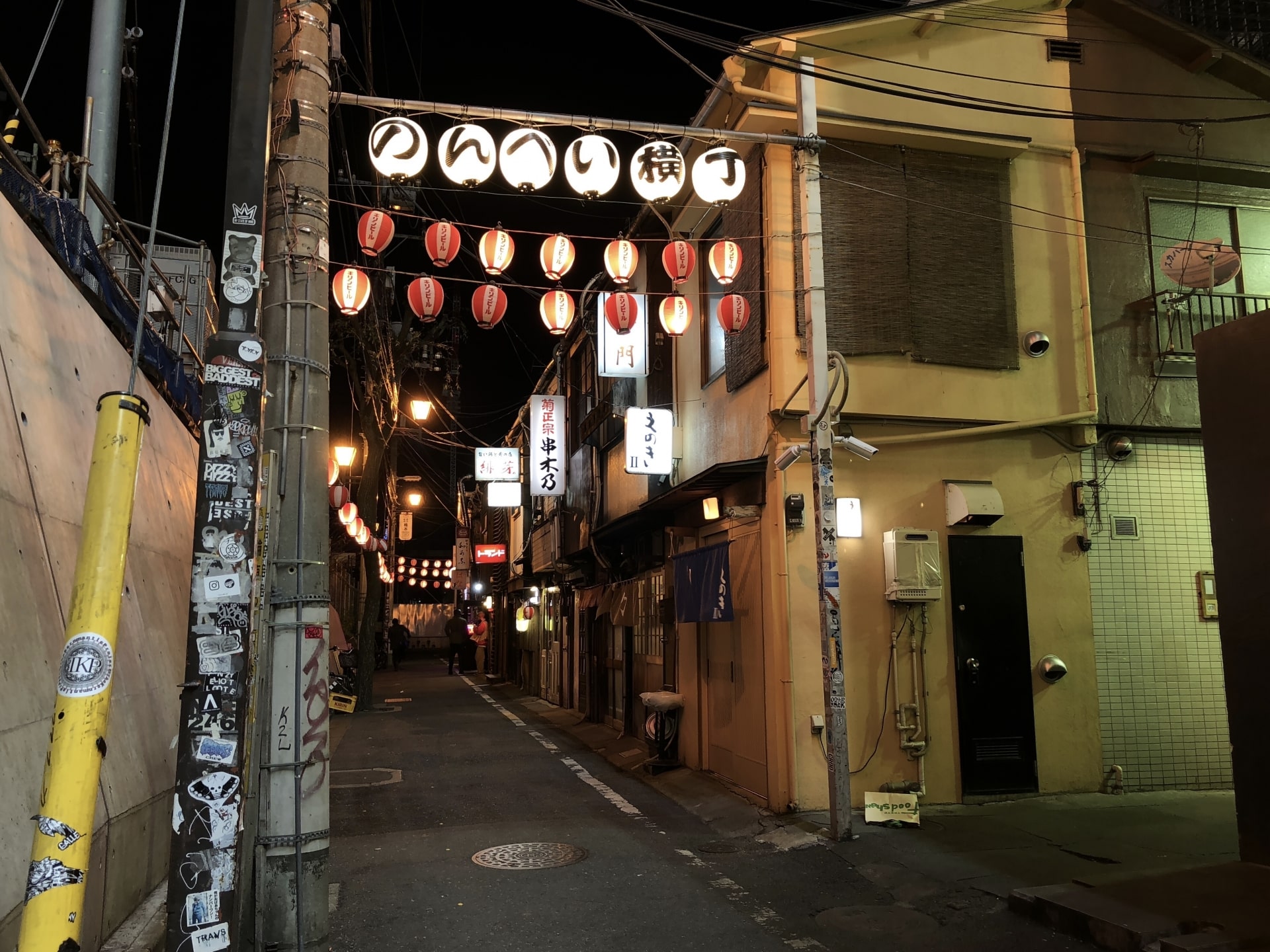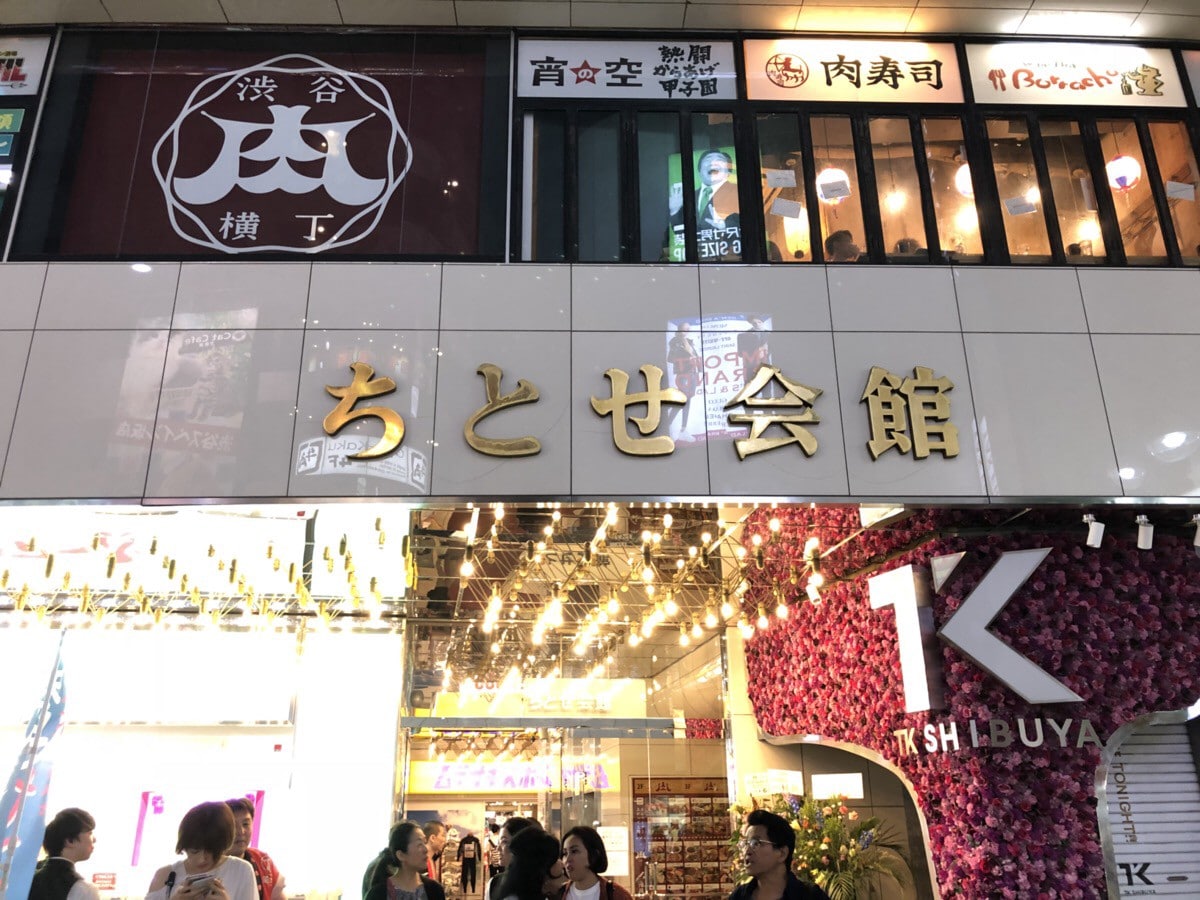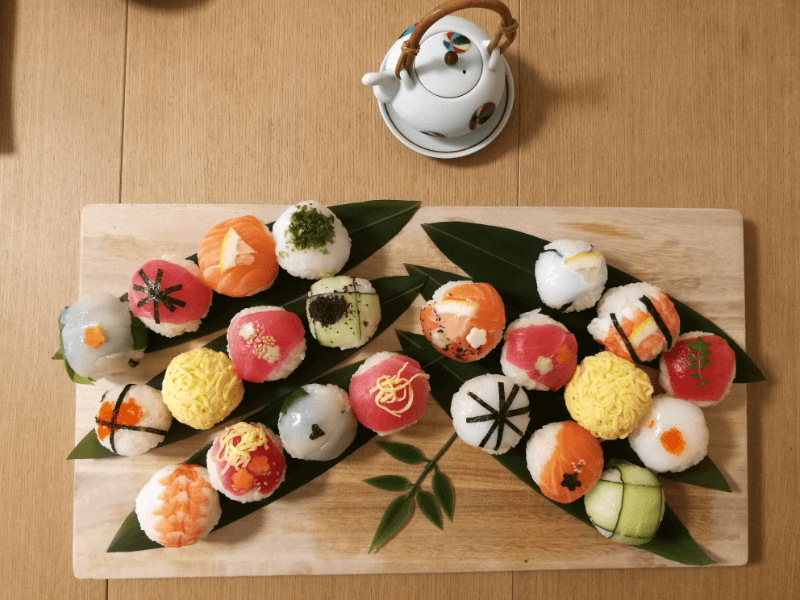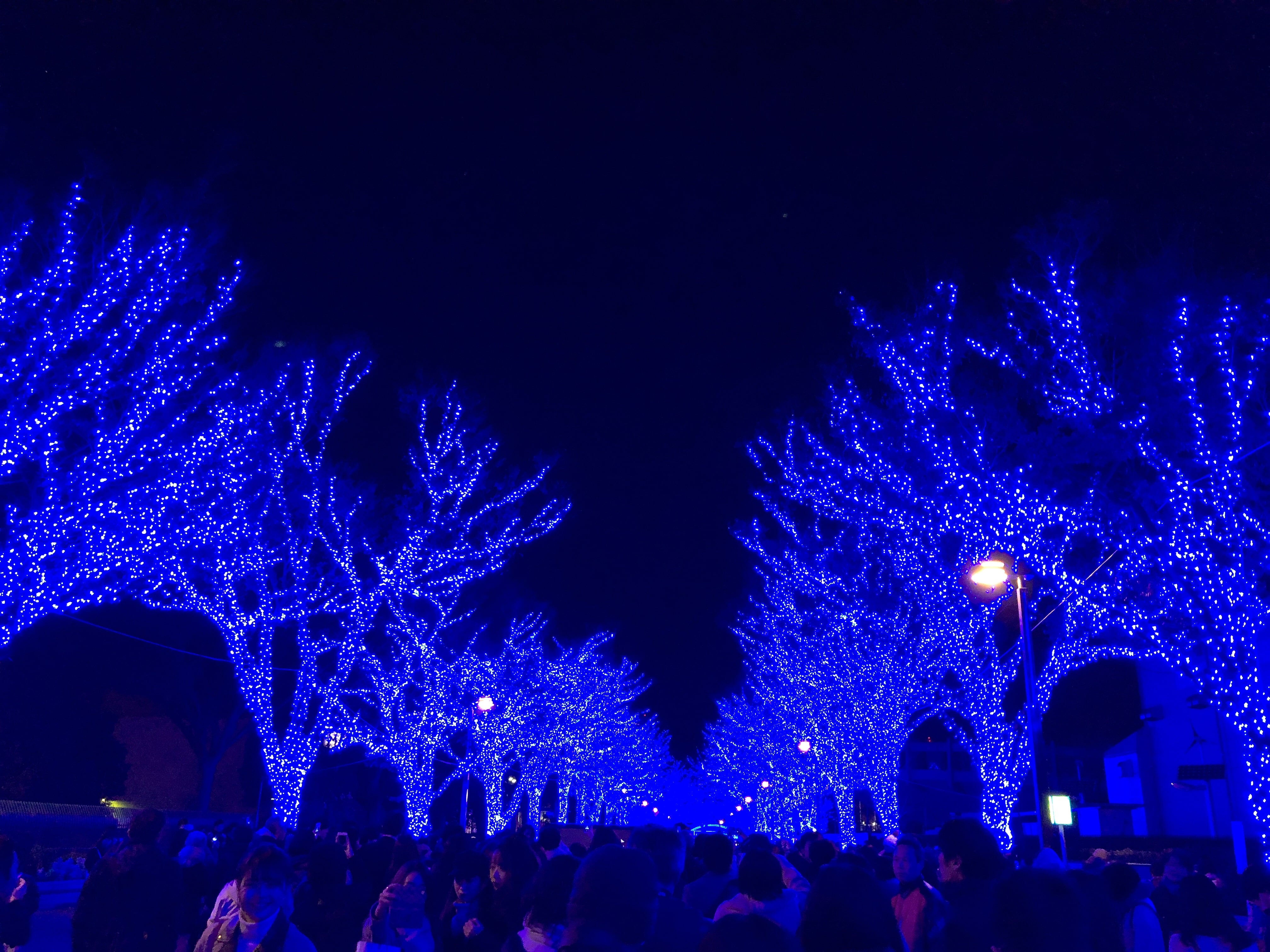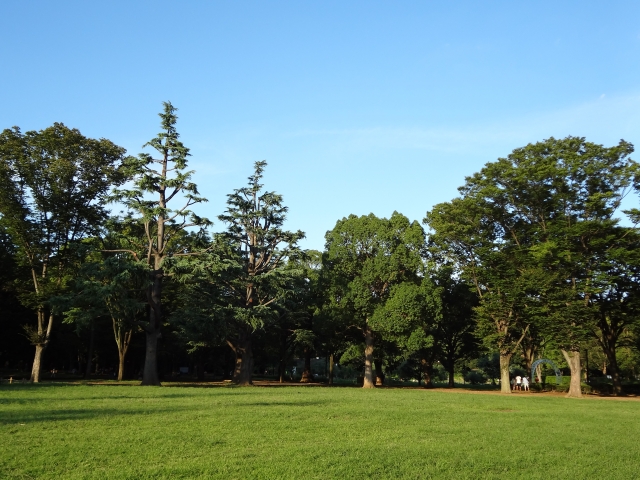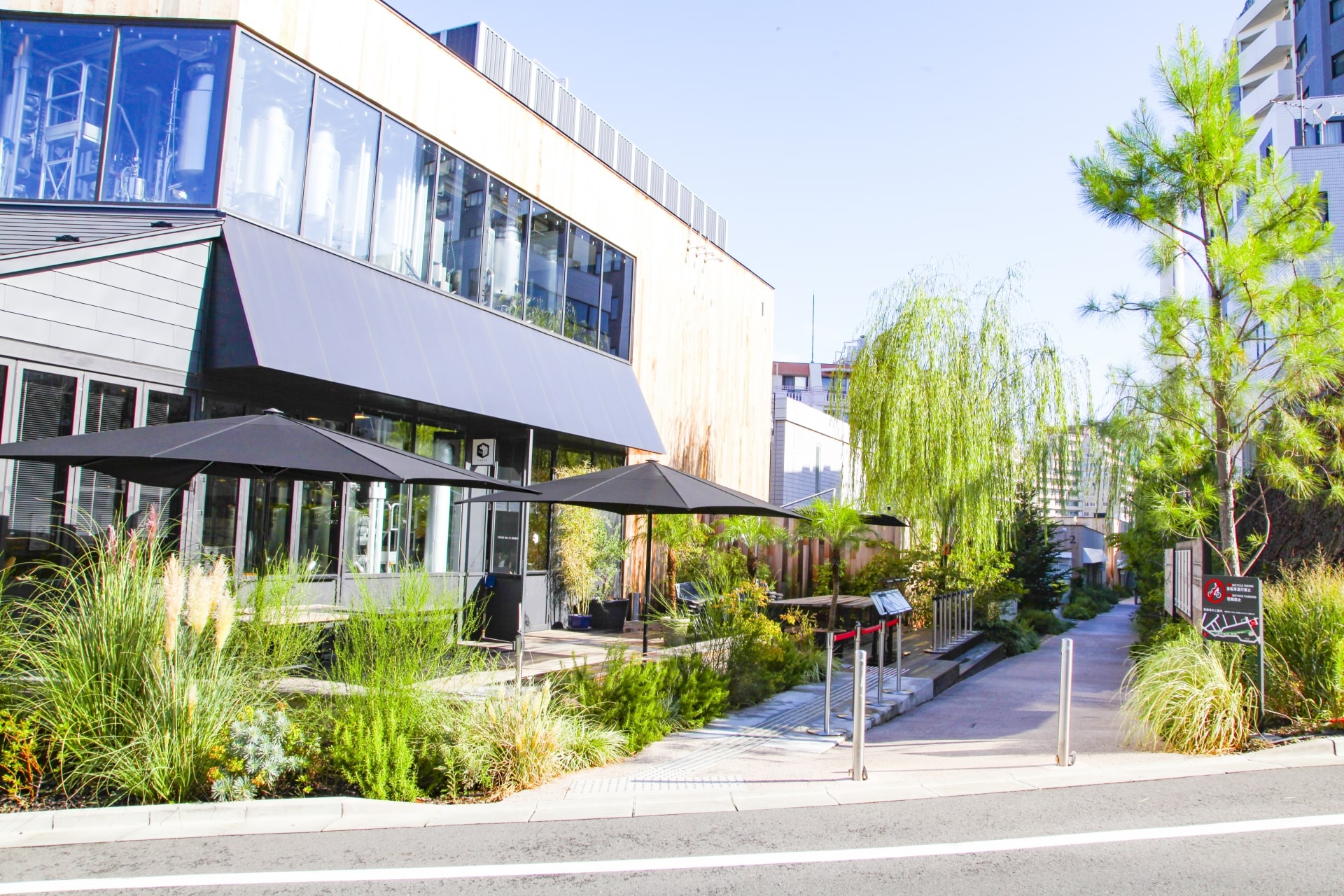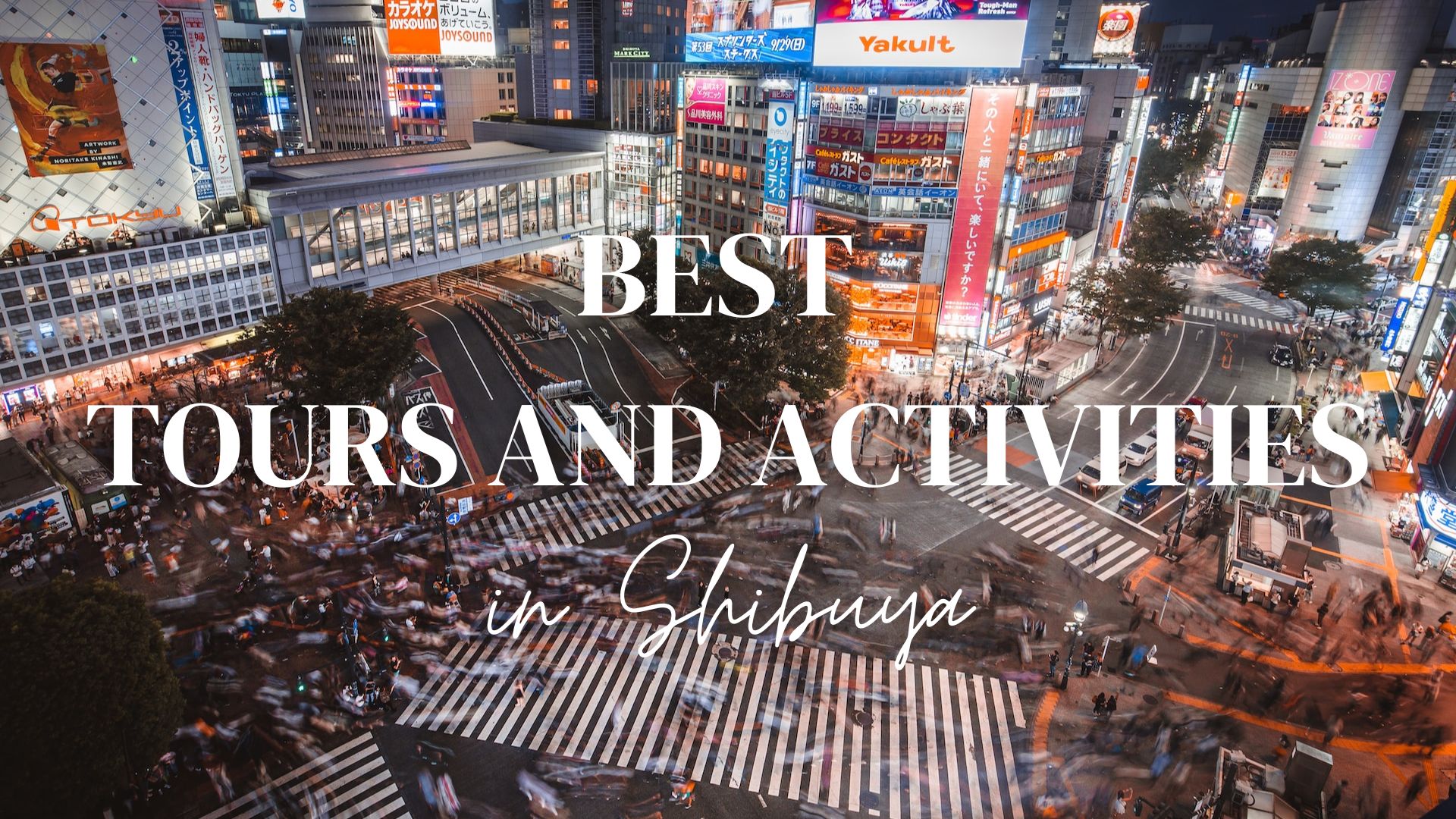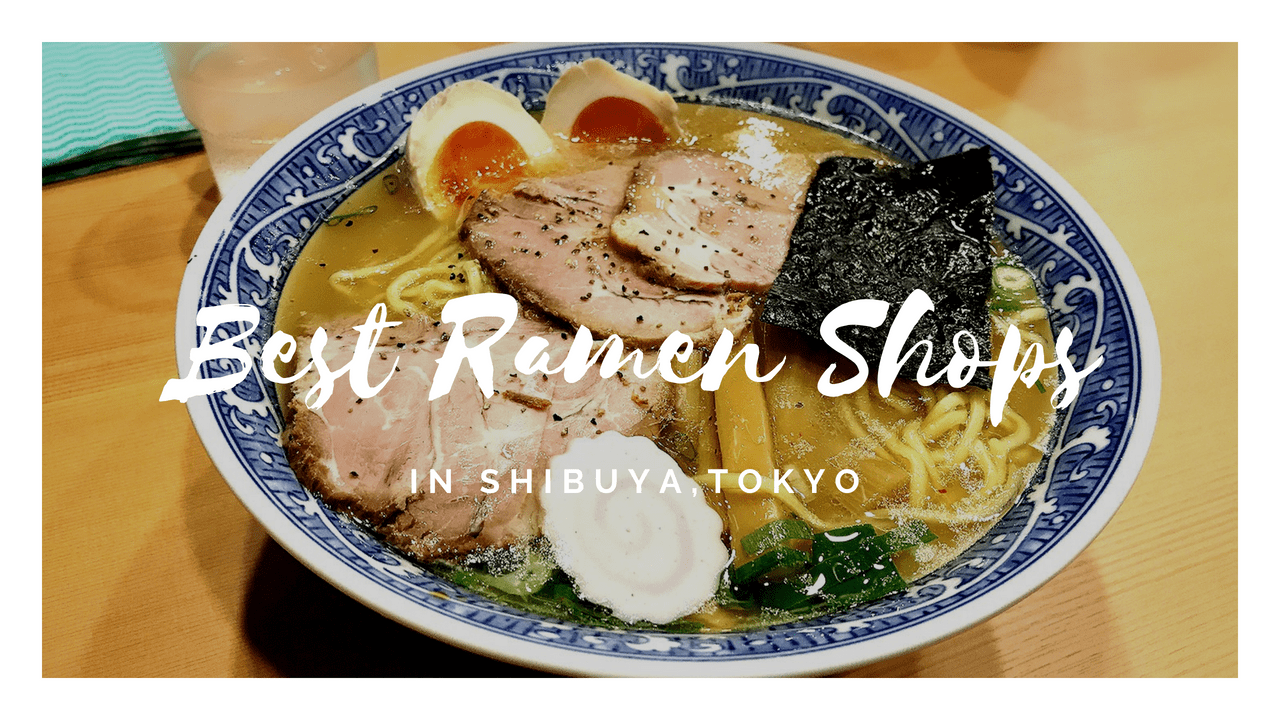28 Best Things to Do in Shibuya 2025
Best Things to Do in Shibuya: From Shibuya Crossing to Shibuya Sky Observatory
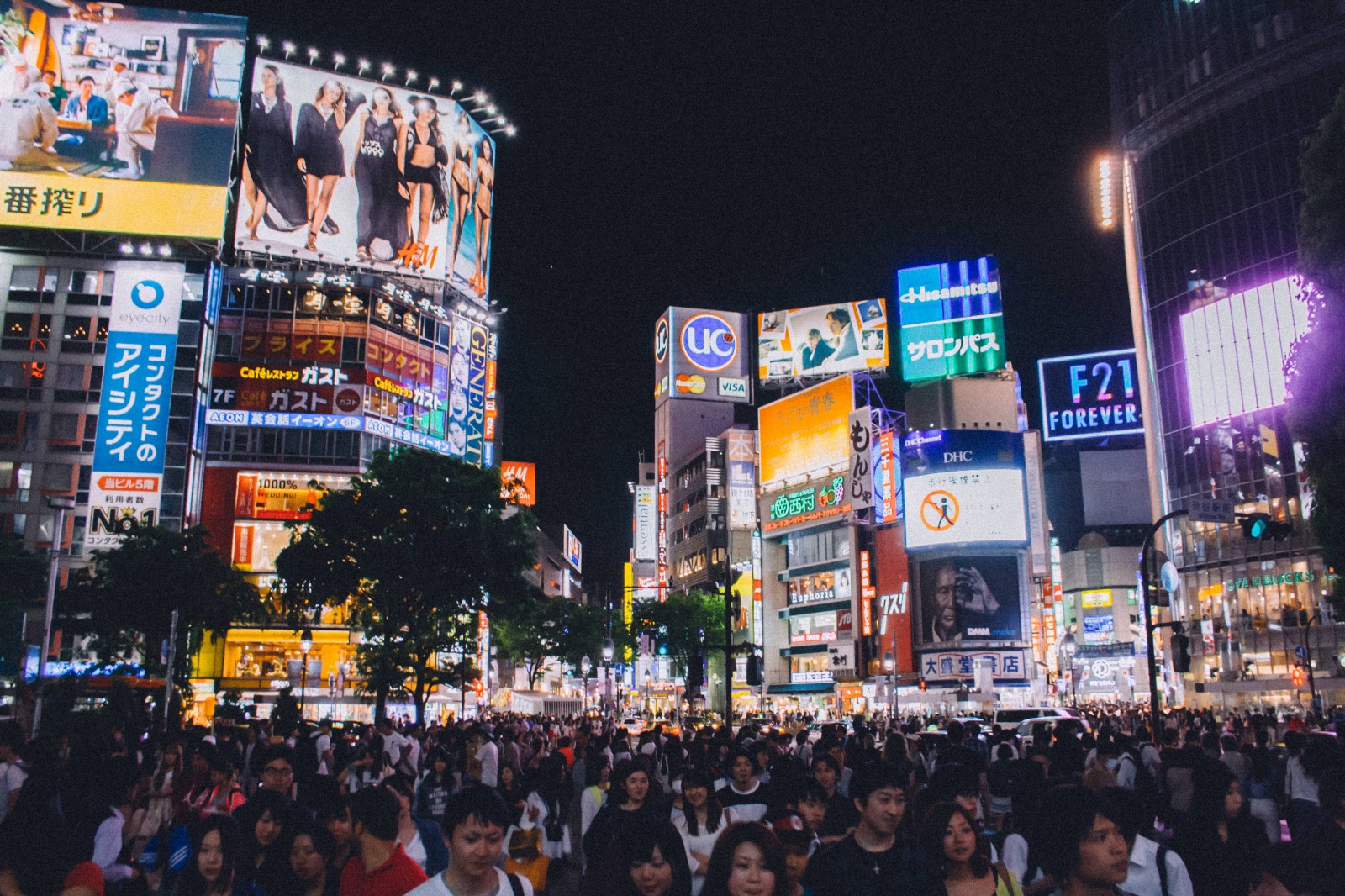
The center of young generation, Shibuya is the most energetic district in Tokyo, offering countless shops, dining spots and entertainment facilities! It’s one of the busiest, and the most popular areas in Tokyo, and it’s a must-visit place for every tourist to captivate the famous Shibuya Crossing and take a photo. From the iconic Shibuya Crossing to Tokyo’s new landmark Shibuya Sky, here are best things to do in Shibuya area which should definitely be added to your bucket list.
For those of you looking for a comprehensive area guide, be sure to check out our All‑in‑One Guide for Shibuya.
*Please note that this article contains affiliate links.
What is Shibuya Known For?
While a variety of areas have been gaining attention in Tokyo tourism, Shibuya remains the center of all trends in Tokyo, including fashion and business. Symbolized by that crowded intersection Shibuya Crossing and neon-lit streets, Shibuya is one of the busiest areas with a plenty of attractions for tourists to visit and various seasonal events held throughout the year. New landmarks, shopping malls, hotels and other unique facilities have opened lately in Shibuya, making the district even more exciting spot to visit.
Shibuya also offers diverse food choices from high-end dining to budget-friendly eateries, and there are hundreds of restaurants, cafes, and Izakaya. There are also a great number of bars and nightclubs as the district is known as one of the best areas for night out.
Shibuya proximity to other popular areas such as Harajuku and Shinjuku and excellent accessibility is another attraction. Tokyo’s trendy neighbourhood such as Nakameguro and Daikanyama are also located nearby.
Where is Shibuya and How to Get There?
Shibuya is a major area located in Shibuya Ward, one of the 23 special wards in central Tokyo. It lies in the southwestern part of central Tokyo, neighboring popular areas like Shinjuku, Harajuku, and Omotesando.
Shibuya Station is a massive transportation hub served by multiple lines including JR Yamanote, Saikyo, and Shonan-Shinjuku lines, Tokyo Metro (Ginza, Hanzomon, and Fukutoshin lines), as well as Tokyu and Keio Inokashira lines. Despite its size and complexity, the station features clear English signage, digital information boards, and station maps to help visitors find their way. For those unfamiliar with the layout, don’t hesitate to ask station staff for guidance—local assistance is both friendly and efficient.
How to Get to Shibuya From the Airport
From Narita Airport:
Travelers arriving at Narita International Airport can board the Narita Express (NEX), which connects directly to Shibuya Station. The journey typically lasts about 90 minutes, with a one-way fare of approximately 3,320 yen. Payment can be made using Suica, Pasmo, (unless you have a Japan Rail Pass which includes the NEX), making the process smooth and efficient. For more details when traveling from Narita Airport check our dedicated guide!
From Haneda Airport:
From Haneda International Airport, one popular option is to take the Tokyo Monorail to Hamamatsucho Station, then transfer to the JR Yamanote Line for a short ride to Shibuya. This route takes roughly 45–60 minutes with fares ranging from ¥600 to ¥1,000. Alternatively, direct limousine bus services from Haneda to Shibuya offer another convenient route for those carrying more luggage.
From Within Tokyo
- Shinjuku to Shibuya: Hop on the JR Yamanote Line for a quick 7-minute ride for less than 200 yen.
- Ginza to Shibuya: The Tokyo Metro Ginza Line can be used by transferring at key interchange stations; overall travel times range from 15 to 20 minutes for 210 yen.
- Tokyo Station to Shibuya: Shibuya Station is directly connected to Tokyo Station through the JR Yamanote Line, the ride is 26 minutes long for 210 yen.
- Asakusa to Shibuya: A common route involves taking the Toei Asakusa Line to a connecting line such as the Ginza or Hanzomon, with a total travel time of approximately 25–30 minutes for 260 yen. In all cases, Suica and Pasmo cards simplify your journey.
Best Things to Do in Shibuya
Discover the top things to do in Shibuya—this is where you’ll find both timeless attractions and the hottest new spots. The iconic Shibuya Scramble Crossing, right in front of the station, is a must-see. Don’t miss the impressive new commercial buildings that provide stunning panoramic views of Tokyo. Center Gai Street is alive with energy, featuring an array of restaurants and fashion shops. Shibuya is undeniably one of the most vibrant and exciting places to experience in Tokyo.
Here is a map summarizing all the best things to do in Shibuya:
Iconic Landmarks & Attractions in Shibuya
1. Shibuya Scramble Crossing
The busiest pedestrian crossing in the world, with as many as 3,000 people crossing at a time, Shibuya Scramble Crossing or simply called Shibuya Crossing will surely blow your mind! One of the most popular tourist attractions in Tokyo is a must-visit photo spot among most tourists. There are several great spots in Shibuya where you can capture the great views of the crossing. Check out the link below introducing some of the best photo spots around the crossing!
Be sure to also read our list of the Best Photo Spots for Shibuya Scramble Crossing!
 Access Access |
Next to Shibuya Station |
|---|
2. Shibuya Center Gai Street
Shibuya Center Gai Street, immediately across the Shibuya Scramble Crossing, is the first choice for visitors in Shibuya to dine and enjoy nightlife since it has plenty of cafes, restaurants, bars, Izakaya (Japanese style pub) and night clubs. There are a variety of restaurants including Ramen, Sushi, fast food and everything along this street. The street is even more vibrant and colourful after sunset as it’s lit by dazzling neon lights of shop signs. Shibuya Center Gai Street is also an ideal place for shopping as there are numbers of stores, including department stores, clothing stores, drug stores and stationery stores. The entrance of the street located right off the Scramble Crossing.
3. Hachiko Statue
The Hachiko’s bronze statue has been a symbol of Shibuya for over 80 years and it’s the most popular meeting point of the district, besides being a tremendously popular photo spot. You can meet him in front of Shibuya station’s Hachiko Exit.
 Access Access |
Next to Shibuya Station's Hachiko Exit |
|---|---|
 Official Website Official Website |
https://www.city.shibuya.tokyo.jp/bunka/bunkazai/midokoro/map_exe_shibuya_station.html |
4. Shibuya Scramble Square and Shibuya Sky
The tallest building in Shibuya area, Shibuya Scramble Square has opened in 2019 autumn, offering over 200 shops and restaurants inside. At the roof top of the building, there is an observatory “Shibuya Sky” where you can gaze the coolest view of the streets of Shibuya including the Shibuya Crossing. Shibuya Sky has become a new landmark of Tokyo today, and one of must-visit observatories alongside Tokyo Skytree and Tokyo Tower.
▶ Click HERE to Book a SHIBUYA SKY Admission Ticket Now!!
 Access Access |
Roof of the Shibuya Scramble Square skyscraper |
|---|---|
 Official Website Official Website |
https://www.shibuya-scramble-square.com/sky/ |
5. Shibuya Tsutaya
Shibuya Tsutaya is located directly across from the famous Shibuya Crossing. Opened in 1999, it has become a symbol of the vibrant district and serves as a multi-purpose complex featuring a wide selection of books, CDs, and DVDs, as well as a café and an event space. In 2024, Shibuya Tsutaya underwent renovations and reopened, now offering enhanced facilities to better meet the evolving needs of its visitors, such as coworking spaces, a larger cafe or a huge variety of popular merchandise.
 Access Access |
1-min walk from Shibuya Station |
|---|---|
 Official Website Official Website |
https://shibuyatsutaya.tsite.jp/ |
6. Miyashita Park
Miyashita Park is a commercial complex with a rooftop park, which opened in 2020 after being renovated from a public park. The cool designed building consists of shops, restaurants and a hotel, and there are a skatepark, bouldering facility and green space on the rooftop.
Miyashita Park in Shibuya offers a variety of engaging activities. On the rooftop, visitors can enjoy a skatepark suitable for all levels, a challenging bouldering wall, and a sand court for group sports like beach volleyball and soccer. For relaxation, the green spaces with lawns and shaded seating provide a peaceful environment. Food enthusiasts can explore Shibuya Yokocho on the ground level, featuring eateries with regional specialties from across Japan in a lively atmosphere.
 Access Access |
3-min walk from Shibuya Station |
|---|---|
 Official Website Official Website |
https://mitsui-shopping-park.com/urban/miyashita/ |
Food & Shopping in Shibuya
Shibuya’s dining scene is a vibrant fusion of traditional Japanese flavors and international influences, reflecting the district’s dynamic and youthful energy. The area offers an extensive range of culinary experiences, from high-end establishments to casual eateries, catering to diverse tastes and preferences. For instance, Kobe Beef Teppanyaki Hakushu is renowned for its high-quality Kobe beef prepared on iron griddles, while Uobei Shibuya Dogenzaka provides a modern twist on sushi dining with its speedy conveyor belt service, making gourmet sushi both accessible and efficient.
For more info about restaurants in Shibuya, check out our list of the Best Restaurants in Shibuya!
As for shopping, Shibuya is a central hub for Tokyo’s fashion-forward and trendsetting culture. The district’s streets are lined with an eclectic mix of international retailers, Japanese chains, and independent boutiques, creating a shopping environment that caters to a wide array of styles and preferences and fostering a unique atmosphere.
For more info about shopping in Shibuya, check our list of Best Shops in Shibuya!
7. Shibuya 109
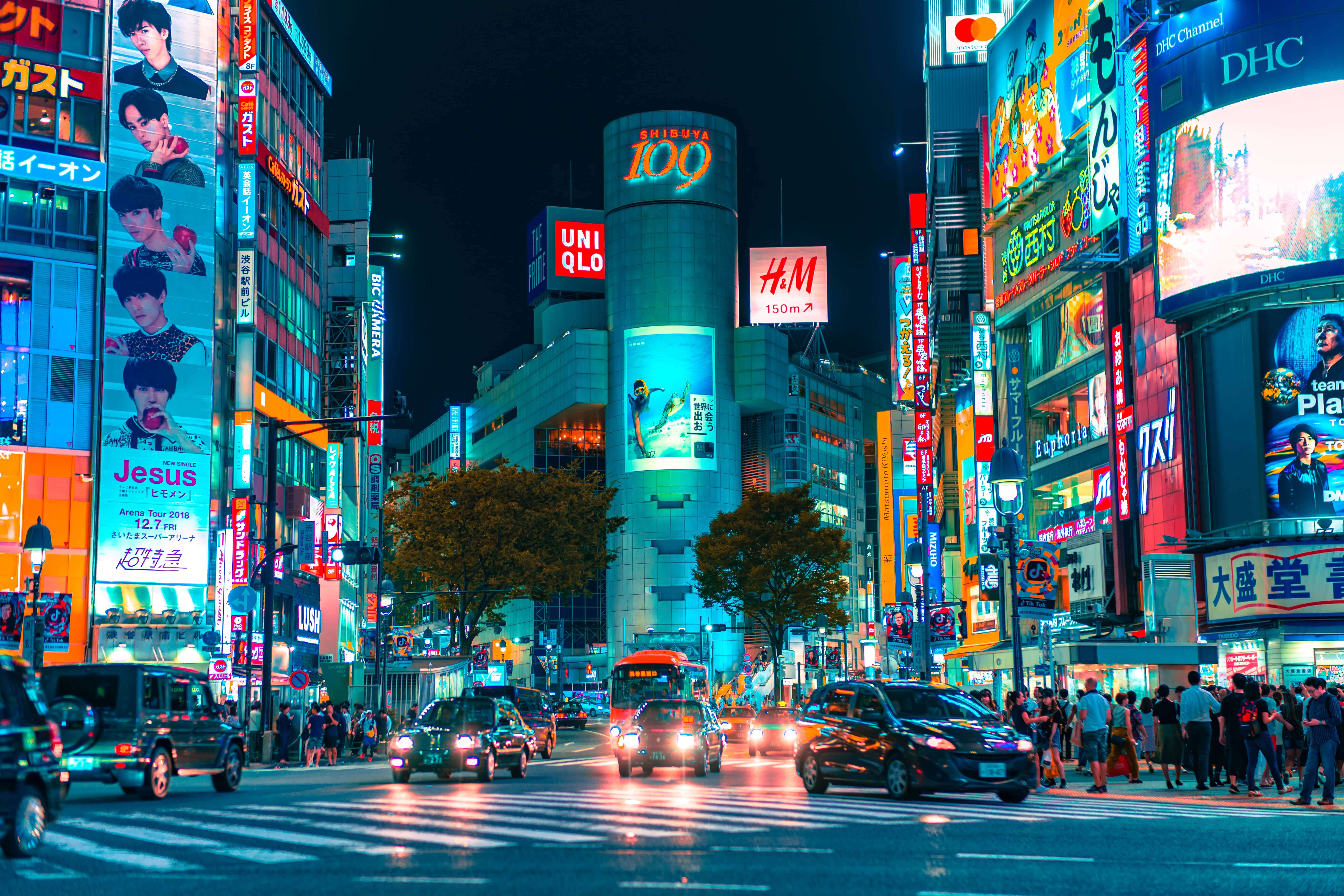
Shibuya 109 has been an icon of Tokyo’s young fashion culture for a couple of decades being adored as “Marukyu” among young fashionistas, especially from the gyaru subculture . The 10-story fashion complex is home to over 100 boutiques, offering a wide range of fashion items with the latest trends, mostly with affordable prices. The building is located just across the Shibuya Crossing. MAGNET by SHIBUYA109, another shopping complex targeting young men is located only a few blocks away.
8. Shibuya PARCO
The iconic commercial building in Shibuya, Shibuya PARCO has been renovated and re-opened in 2019 autumn with nearly 200 shops, restaurants and entertainment facilities. Some of the most notable shops at Shibuya PARCO is the first official Nintendo store in Japan, Nintendo TOKYO where you can shop the latest games as well as a wide range of game-related merchandise. The store is located on the Cyberspace Shibuya floor (6F) which is dedicated to game, anime and character items. Pokemon Center Shibuya is also located on the same floor!
9. SHIBUYA MEGA DONKI
Don Quijote (DONKI) is arguably the most popular place to shop among tourists as you can find pretty much everything including living necessities to unique souvenirs. The biggest branch of Don Quijote, Shibuya Mega Donki is located in Shibuya, which comprises several floors and is open for 24 hours.
Shoppers can find a vast array of products, including fresh groceries, cosmetics, electronics, luxury brand items, and character merchandise. Notably, there’s a Tax-Free counter, offering international visitors the convenience of tax-free shopping.
 Access Access |
5-min walk from Shibuya Station |
|---|---|
 Official Website Official Website |
https://www.donki.com/store/shop_detail.php?shop_id=442 |
10. Shibuya Stream
A relatively recent landmark of the district, Shibuya Stream is a 180m tall multi-purpose complex, directly linked to Shibuya Station. The 35-story building is home to various facilities, hosting approximately 30 restaurants and shops across its first to third floors. Dining options range from traditional Japanese sushi at SUSHI TOKYO TEN to authentic Spanish paella at XIRINGUITO Escribà.
For shoppers, the facility offers a selection of trendy boutiques and specialty stores, providing a comprehensive retail experience. In addition, there’s also an event hall, a hotel and office spaces. It’s one of the most trending spots to hang out in Tokyo.
11. Shibuya Loft
If you are hunting for cool and unique souvenirs from Japan, LOFT is one of the best shops where you can find a range of those items. LOFT has stores across Japan, and Shibuya LOFT is one of the biggest branches, offering a wide variety items in the 6-story outlet including satationery, household goods, accessories, clothes, bags, cosmetics products, souvenirs and many more.
 Access Access |
5-min walk from Shibuya Station |
|---|---|
 Official Website Official Website |
https://www.loft.co.jp/shop_list/detail.php?shop_id=189 |
12. Shibuya Hikarie
Shibuya Hikarie is a popular shopping complex near Shibuya Station which consists of numbers of shops, restaurants, cafes and some office. It also has an admission free observation deck where you can enjoy a great overlooking view of vibrant and energetic Shibuya neighbourhood as well as a diorama view of railways. The observation deck is located on the 11th floor of the building (182m).
13. Shibuya Sakura Stage

Shibuya Sakura Stage is a new large-scale complex that opened in summer 2024 with various establishments. It’s located in the Sakuragaoka area of the Shibuya district, and directly connected to Shibuya Station by a pedestrian bridge.
Shibuya Sakura Stage is designed as a multifaceted space that embodies the spirit of Shibuya’s dynamic culture. The cutting-edge digital space and refreshing greenery feels akin to a city within a city, creating new interactions and experiences, offering a unique experience for visitors.
The TOKIMEKI STAGE features a captivating atrium illuminated by LED lights, creating a vibrant entrance. NIGIWAI STAGE serves as a lively plaza fostering community interactions, while HAGUKUMI STAGE presents a serene garden showcasing seasonal flora, including yamazakura cherry trees. Additionally, SAKURA TERRACE provides a picturesque hillside walkway reminiscent of cherry blossom-lined paths, blending digital art installations with natural beauty.
 Access Access |
3-min walk from Shibuya Station |
|---|---|
 Official Website Official Website |
https://www.shibuya-sakura-stage.com/ |
14. Dogenzaka-dori
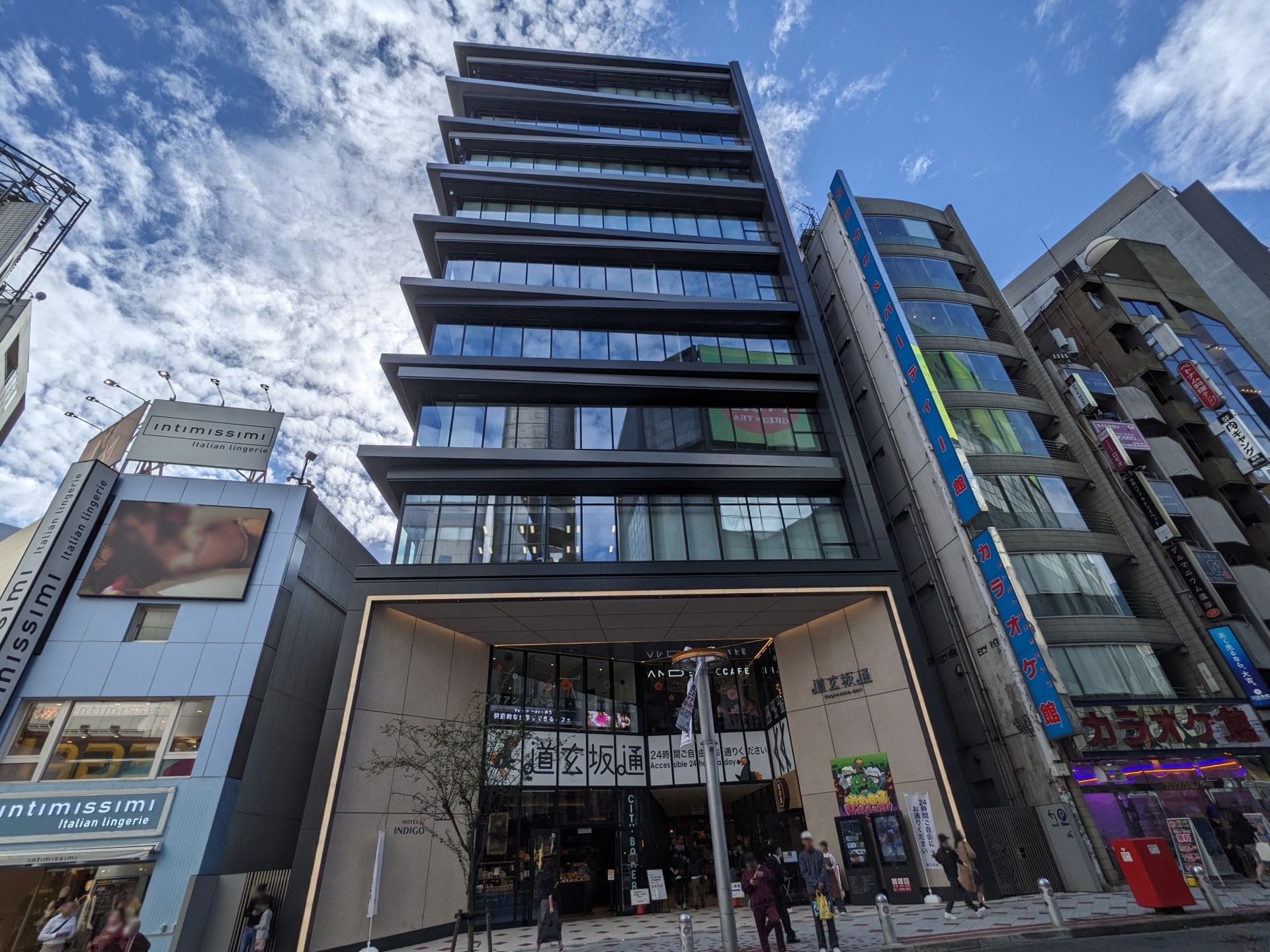
Dogenzaka-dori is large multi-purpose complex located in Dogenzaka area of Shibuya districts. It was completed in March 2023, and opened in September same year, as part of the Shibuya Ward Dogenzaka 2-chome Development Plan. The complex is about 115 m high and consists of 28 floors
The first two floors host a variety of retail stores and dining establishments, providing visitors with diverse shopping and culinary options. Above these, floors two through ten are dedicated to modern office spaces, while the upper levels, from the eleventh to the twenty-eighth floor, house the Hotel Indigo Tokyo Shibuya, offering accommodations with panoramic city views.
15. Sushi in Shibuya
Shibuya is a prime destination for sushi lovers, balancing tradition with speed and accessibility in its approach to this iconic cuisine. For sushi enthusiasts, Uobei Shibuya Dogenzaka offers a modern twist with its high-speed conveyor belt system, while Sushi no Midori is renowned for its fresh and generously portioned sushi selections.
16. Ramen in Shibuya
The ramen scene here thrives on variety, from bold tonkotsu broths to citrusy yuzu infusions, appealing to both purists and experimenters. Ramen lovers can savor the rich, flavorful bowls at Ichiran Shibuya, known for its customizable tonkotsu ramen, or explore Afuri Shibuya, celebrated for its yuzu-infused broth that adds a citrusy note to the traditional dish.
17. Wagyu in Shibuya
Known for its indulgent dining experiences, Shibuya is a go-to spot for savoring top-grade wagyu served with precision and flair. For premium Japanese beef, Han no Daidokoro offers expertly grilled Yamagata beef yakiniku, while Kobe Beef Teppanyaki Hakushu provides an intimate setting to enjoy succulent Kobe beef prepared on a teppanyaki grill.
18. Okonomiyaki in Shibuya
Comfort food meets creativity in Shibuya’s okonomiyaki joints, where each pancake is a customizable, flavor-packed experience. Those craving savory pancakes can visit Sakuratei, which offers a variety of okonomiyaki options in an artistic setting, or Okonomiyaki Mura, known for its authentic Hiroshima-style okonomiyaki.
19. Trendy Cafes
Instagram-worthy food and drinks have become the biggest trend in Japan lately, and Shibuya is the best area to find eye-popping yet delicious food, as many cafes and restaurants are located in this area. For instance, you could try Burn Side ST Cafe or Cafe Kaila.
For more Info, be sure to check out our list of the Best Pancakes in Shibuya Area and our list of the Best Desserts in Shibuya and Harajuku!
Nightlife in Shibuya
Check our dedicated article below for more details about Shibuya’s nightlife and where to stay:
20. Nonbei Yokocho
Nonbei Yokocho, translating to “Drunkard’s Alley,” is a historic enclave in Shibuya that emerged in the late 1940s as a post-war black market. This narrow alleyway, nestled between the JR Yamanote Line tracks and a small lane covering the Shibuya River, features two parallel paths lined with tiny bars and eateries, each exuding a nostalgic Showa-era ambiance. Many of these establishments are so compact they accommodate only four to five patrons, offering an intimate glimpse into Tokyo’s traditional drinking culture.
21. Niku Yokocho
Niku Yokocho, situated within the Chitose Kaikan Building in Shibuya’s bustling Center-gai Street, is a haven for meat enthusiasts on a budget. This complex houses 28 restaurants across its second and third floors, each specializing in various meat dishes ranging from yakiniku (Japanese BBQ) and yakitori (grilled chicken skewers) to innovative creations like meat sushi. Notable spots include Nikutengoku and Nikuzushi, where patrons can savor unique meat-topped sushi, and Yoi-no-Sora, renowned for its affordable all-you-can-eat karaage (Japanese-style fried chicken) paired with beer.
Try this Shibuya Bar Hopping Nightlife Tour, and you’ll get to taste the finest meat dishes at their handpicked izakaya bars.
 Access Access |
5-min walk from Shibuya Station |
|---|---|
 Official Website Official Website |
https://shibuya-nikuyokocho.com/ |
22. Clubbing
When it comes to nightlife, Shibuya is one of the most vibrant and dazzling districts in Tokyo. Shibuya is where several small and large-scale nightclubs and bars gather, where you can hang out and dance the night away until morning. Some of the most famous nightclubs in Tokyo, such as WOMB, ATOM TOKYO and Club Camerot are located in Shibuya.
Experiences in Shibuya
23. Go-Kart
Step into the shoes of your favorite anime or game character and exploring Shibuya, Tokyo’s vibrant fashion and entertainment district! Imagine wandering through Shibuya Crossing, exploring trendy shops and cafes, all while immersing yourself in the essence of your character. It’s a fantastic way to soak in the dynamic atmosphere of Tokyo and enjoy the sights and sounds of Shibuya. Ready to embark on this exciting adventure?
▶ Book a Street Go Kart Experience in Shibuya!
24. Kintsugi Experience
Kintsugi (金継ぎ “golden joinery”) is a traditional technique of fixing broken pottery using lacquer and gold. It’s a Japanese art of repairing based on the philosophy of Japanese tea ceremony to accept breakage as part of the object’s history rather than disguising with something.
Near Shibuya, there is a workshop where you can have a traditional Kintsugi experience, learning the technique of repairing broken ceramic pieces and recreate an art piece. Explore the new-found Japanese culture through this hands-on activity and take home one and only Kintsugi art made by you!
25. Samurai Armor Studio
Samurai armors (called Kacchu in Japanese) is a transitional protective equipment, worn by Samurais mainly during battles using swords and bows. It’s one of the most fascinating things about Japanese history and tradition. Samurai Armor Studio offers a great Samurai experience. You can put Kacchu on yourself, take photos and even go on a street of Shibuya to have a photo shooting session.
▶ Book Samurai Photoshoot Experience in Tokyo
26. Sushi Making
Cooking class is becoming one of the hottest activities for foreign visitors in Japan today, and Sushi making is the most classic one. Although Shibuya is Tokyo’s center of the young culture, you can join a traditional Sushi making class hosted by a local teacher! How about making and tasting delicious Sushi dishes by yourself, and take the recipes back home??
▶︎Book the best Sushi cooking class in Shibuya!
For more info about sushi making classes, check out our list of the Best Sushi Making Classes in Tokyo!
Seasonal Attractions in Shibuya
Shibuya offers a variety of seasonal attractions that highlight its dynamic character throughout the year. In autumn, the district becomes a focal point for Halloween celebrations, with costumed revelers gathering in the streets. However, due to concerns over crowd control and public safety, local authorities have implemented measures such as banning public alcohol consumption during the Halloween period. In winter, Shibuya transforms with enchanting illumination displays, including the renowned Blue Cave, where hundreds of thousands of blue LED lights adorn the trees along Koen Dori Street, creating a mesmerizing tunnel of light.
27. SHIBUYA Blue Cave
The Shibuya Blue Cave Illumination transforms the area from Shibuya Koen Dori Street to Yoyogi Park Keyaki Namiki into a mesmerizing winter wonderland. Approximately 770,000 blue LED lights adorn the 800-meter stretch, enveloping visitors in a serene azure glow. The illumination typically runs from early to late December, with lights shimmering from 5:00 PM to 10:00 PM daily. In recent years, the event has expanded to include a Christmas market featuring around 20 stalls offering festive foods and goods, enhancing the holiday atmosphere.
Also, a short walk away there’s another popular illumination display in Omotesando around the same dates.
28. Shibuya Halloween
The notorious “Shibuya Halloween” is an “unofficial” street event that invites over 1 million party animals in unique and crazy Halloween costumes. However, due to the past Halloween events at Shibuya which went out of control resulting multiple arrests, Shibuya district decided to ban public drinking during Halloween season from 25 October to 1 November 2019.
Nearby Spots from Shibuya
29. Yoyogi Park
Yoyogi Park is one of the largest parks in Tokyo, situated in the north of the Shibuya district. The park consists of spacious lawn areas, ponds, and forested areas, which are perfect for outdoor activities. Besides, the park holds various seasonal events throughout the year, and it’s a very popular cherry blossom viewing spot during the sakura season. Yoyogi Park can also be accessed from Harajuku Station, and it’s connected to Meiji Shrine, one of the most famous landmarks in the city.
 Access Access |
3-min walk from Harajuku Station or 5-min walk from Yoyogi-Hachiman Station |
|---|---|
 Official Website Official Website |
https://www.tokyo-park.or.jp/park/yoyogi/ |
30. Omotesando
Omotesando, just a short walk from Shibuya, is known for its blend of high-end fashion, modern architecture, and tree-lined boulevards. Often referred to as Tokyo’s Champs-Élysées, the area is home to flagship stores from global luxury brands alongside Japanese designer boutiques. It also features striking buildings designed by renowned architects and a mix of stylish cafés and galleries, making it a favorite for design enthusiasts and fashion-forward visitors.
 Access Access |
Omote-Sandp Station |
|---|
31. Daikanyama
Daikanyama is a neighborhood adjacent to Shibuya, easily reachable by a 10-15 minute walk or a short train ride. It is regarded as one of the trendiest and coolest districts in Tokyo, featuring numerous trendy cafes, stylish boutiques, and shops, such as T-Site and Log Road. The area has a relaxed and quiet atmosphere, especially when compared to the busy and crowded streets of central Shibuya.
 Access Access |
Around Daikan-Yama Station or 15-min walk from Shibuya Station |
|---|
32. Yebisu Garden Place
Yebisu Garden Place is a commercial complex located near Ebisu Station, just one stop from Shibuya Station. The complex features a variety of facilities, including office buildings, movie theaters, shops, restaurants, and art museums. It is particularly known for its stunning light displays during the winter season. Additionally, YEBISU BREWERY TOKYO, previously called the Yebisu Beer Museum, is situated nearby and offers exhibits on the company’s history, guided tours, and beer tastings of Yebisu Beer.
Shibuya vs. Other Popular Districts in Tokyo
When it comes to shopping, you might be wondering how Shibuya compares to other well-known areas such as Harajuku or Roppongi. We break down a few key aspects to help you decide which district best fits your style and needs!
Shibuya vs. Harajuku – Youth Culture
| Aspect | Shibuya | Harajuku |
|---|---|---|
| Fashion Trends | Emphasis on street fashion and cutting-edge pop culture. | Known for “kawaii” culture, Lolita fashion, and other unique subcultures. |
| Shopping Areas | Features large malls like Shibuya 109, catering to trendy youth fashion. | Takeshita Street is lined with small boutiques and shops offering eclectic and whimsical items. |
| Cultural Vibe | Fast-paced and trendsetting, attracting a youthful crowd seeking the latest styles. | Celebrates individuality and self-expression through diverse fashion subcultures. |
| Culinary Scene | Offers a variety of dining options, including international cuisines and themed cafes. | Famous for sweet treats like crepes and other desserts popular among teenagers. |
Shibuya vs. Roppongi – Nightlife
| Aspect | Shibuya | Roppongi |
|---|---|---|
| Club Scene | Vibrant, youth-oriented clubs with energetic atmospheres. | Hosts upscale clubs attracting an international and mature clientele. |
| Dining Options | Numerous casual eateries and izakayas catering to a younger crowd. | Renowned for fine dining establishments and gourmet restaurants. |
| Bar Atmosphere | Features standing bars and casual venues popular among locals and tourists. | Offers stylish bars and lounges, including those in luxury hotels like The Ritz-Carlton. |
| Overall Vibe | Energetic and trendy, appealing to young adults and students. | Sophisticated and cosmopolitan, favored by professionals and expatriates. |
Where to Stay in Shibuya
Staying in Shibuya puts you in the heart of Tokyo’s vibrant youth culture, nightlife, and shopping scene. Whether you’re visiting for fashion, food, or fun, choosing accommodation in Shibuya offers convenience—but it also comes with trade-offs.
Is Shibuya a Good Place to Stay?
Shibuya is a vibrant and bustling district in Tokyo, making it a popular choice for visitors seeking a lively atmosphere and convenient access to the city’s attractions. Its central location and excellent transportation links provide unmatched accessibility to various parts of Tokyo. However, potential visitors should consider both the advantages and disadvantages of staying in Shibuya.
| Pros | Cons |
|---|---|
| Unmatched Accessibility: Shibuya Station is a major transportation hub, offering easy connections to numerous train and subway lines, facilitating travel throughout Tokyo. | Can Be Noisy: The very energy that makes Shibuya appealing can also lead to noise, especially in areas close to major streets and nightlife spots, which might be a concern for those seeking a quieter stay. |
| Vibrant Atmosphere: Known for its dynamic energy, Shibuya is home to iconic sites like the Shibuya Crossing and a plethora of shops, restaurants, and entertainment venues, ensuring there’s always something to do. | Limited Traditional Charm: Shibuya is a modern district, and while it offers a contemporary urban experience, it lacks the traditional Japanese ambiance found in other areas of Tokyo. |
| Great for First-Time Visitors: The district’s lively environment and central location make it an excellent base for those new to Tokyo, providing a comprehensive urban experience. | Higher Prices: Due to its popularity and central location, accommodation and dining in Shibuya can be more expensive compared to other districts. |
Best Hotels in Shibuya
Whether you’re after luxury, comfort, or a budget-friendly stay, Shibuya has something for every traveler.
Luxury: Cerulean Tower Tokyu Hotel
- Panoramic views of Tokyo
- Spacious rooms
- restaurants with Michelin recognition
Mid-range: Shibuya Stream Excel Hotel Tokyu
- Modern
- Stylish
- Directly connected to Shibuya Station via Stream complex
Budget: Hotel Emit Shibuya
- Trendy and affordable
- Walking distance to Cat Street and Harajuku
Hotels Near Shibuya Station
- Connected via Mark City
- Best location for travelers who want direct station access
- ~1 min walk
- Comfortable and convenient for train travelers
- ~5 min walk
- Hip hotel integrated into the shopping/entertainment complex, great for urban explorers.
FAQs About Shibuya
To help you plan your visit, here are answers to some frequently asked questions about Shibuya:
How long should you spend in Shibuya?
A half-day to a full day is ideal for exploring Shibuya, depending on your interests. This allows time to experience its vibrant shopping districts, such as Shibuya 109 and Center-gai, visit cultural sites like the Hachiko Statue, and immerse yourself in the lively atmosphere. Additionally, Shibuya’s proximity to other major areas like Harajuku and Shinjuku makes it a convenient base for further exploration of Tokyo.
How to navigate crowded areas like Shibuya Crossing and Center-gai during peak times?
Shibuya Crossing and Center-gai are known for their bustling crowds, especially during peak hours. Here are some tips to navigate these areas:
-
Stay Alert: Be mindful of your surroundings and follow pedestrian signals at crossings.
-
Avoid Peak Hours: If possible, visit these areas during off-peak times, such as early mornings or late evenings, to experience less congestion.
-
Use Designated Paths: Stick to pedestrian walkways and avoid jaywalking to ensure safety and smooth flow of foot traffic.
Where and how to dispose of trash in Shibuya?
In Shibuya, waste disposal is categorized into burnable, non-burnable, and recyclable items. Garbage collection schedules and guidelines vary by area. It’s recommended to check the specific rules with your accommodation if you’re staying in Shibuya. Public trash bins are limited, so it’s advisable to carry your trash with you until you find appropriate disposal facilities.
Can you get by with English in Shibuya?
While Japanese is the primary language, many establishments in Shibuya, especially those frequented by tourists, have English-speaking staff and offer English menus. Signs and information are often displayed in both Japanese and English, making it relatively easy for English-speaking visitors to navigate and communicate.
Cash vs. cashless payments in Shibuya
Cashless payments are widely accepted in Shibuya, with many shops, restaurants, and cafes offering options like credit cards, mobile payment apps, and electronic money cards (e.g., Suica, Pasmo). However, it’s still advisable to carry some cash, as smaller establishments or certain vendors may prefer cash payments. ATMs are available, but it’s recommended to use those in convenience stores or post offices, as international cards may not be accepted at all machines.
Is it better to go to Shibuya Crossing at night or during the day?
Both times offer unique experiences. For the full Shibuya experience, visit the scramble crossing during peak hours to feel the energy, or catch it early in the morning for cleaner photo opportunities.
During the day, you can appreciate the area’s bustling activity and architecture. At night, the crossing is illuminated by vibrant neon lights, providing a dynamic atmosphere. Visiting at both times can give you a comprehensive feel of Shibuya’s energy.
Is it worth going to Shibuya Sky?
Absolutely. Shibuya Sky is an observation deck offering panoramic views of Tokyo. It’s especially stunning during sunset and into the evening when the city lights up. Many visitors consider it a highlight of their trip.
Where is the best place to take a picture of the Shibuya Crossing?
For an elevated view, consider visiting the Shibuya Sky observation deck, which offers a unique perspective of the crossing. Alternatively, the second-floor Starbucks in the Tsutaya building provides a direct view of the crossing, making it a popular spot for photos. For more details, check our article 6 Best Shibuya Crossing Photo Spots!
Looking for other interesting areas in Tokyo?
Thanks for reading! I hope you have enjoyed my list of the best things to do in Shibuya! For more info about Shibuya and nearby areas, please check the listed articles below!
Written by
"The world is my oyster." As a dedicated globetrotter and hammock enthusiast, I’ve spent years chasing new experiences, collecting stories, and discovering the world’s most incredible destinations. Born and raised in Japan, I’ve always had a deep connection to my roots, but my love for adventure has led me to spend over a decade exploring countries across the globe—from culture-rich cities to remote hideaways.
Travel isn't just a hobby for me; it's a lifestyle. I'm constantly searching for new ways to fuel my wanderlust. Over the years, I’ve developed a wealth of knowledge and a treasure trove of tips that make traveling more enjoyable, practical, and meaningful.
Through my experiences, I've come to appreciate not only the beauty of travel but also the importance of understanding diverse cultures, embracing the unfamiliar, and stepping out of my comfort zone. My travels have shaped who I am today, and I’m excited to share those lessons with others.
With Japan Web Magazine, I aim to offer practical advice, insider tips, and firsthand stories that help travelers navigate their journeys to Japan or setting off on a global adventure. From hidden gems in Japan to travel hacks that make any trip smoother, I hope my insights inspire you to embark on your own adventures and make the most of every moment. Let’s explore the world together!
You can also find my stories here ▶ https://medium.com/@nahobm







